Google Photos How to Refresh Movie Upload
How to Use Google Photos
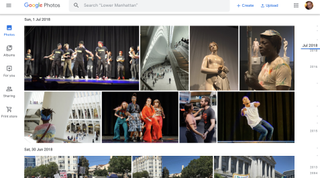
You probably have thousands of photos scattered betwixt your smartphone, your tablet, your camera, and your laptop, with no easy way of knowing which pictures are where. Google Photos is an like shooting fish in a barrel and free style to organize and sync all of your images, so yous tin can access them no matter where you are and which device you lot're using. That's why Google Photos is one of the best photograph storage and sharing sites effectually.
The service uses Google'southward epitome-assay engineering to organize photos and videos, making them easier to search and share. Google Photos provides unlimited storage for complimentary, and offers paid options for people who want to store higher-quality versions of their media.
Here'due south how to get upwards and running with Google Photos in a few easy steps.
- The best deject storage for photos and pictures: free and paid
- Amazon photo storage vs Google Photos: Which is best?
Step 1: Install the Photos app on your devices
Google Photos provides free apps for smartphones in the Apple App Store (opens in new tab) and Google Play shop; there's also a spider web-based version of Google Photos for uploading pictures and videos from PCs and Macs. But instead of downloading full copies of your photos from other devices, the apps simply provide online previews of what you lot've stored in Google'due south cloud. Every bit a result, your smartphone's storage won't be swamped if you accept uploaded thousands of photos and videos from your home PC.
(Google Photos and Google Drive used to automatically sync their photo collections, merely that feature was disabled in 2019. Google provides instructions on how to manually select photos in Drive and copy them over to Photos.)
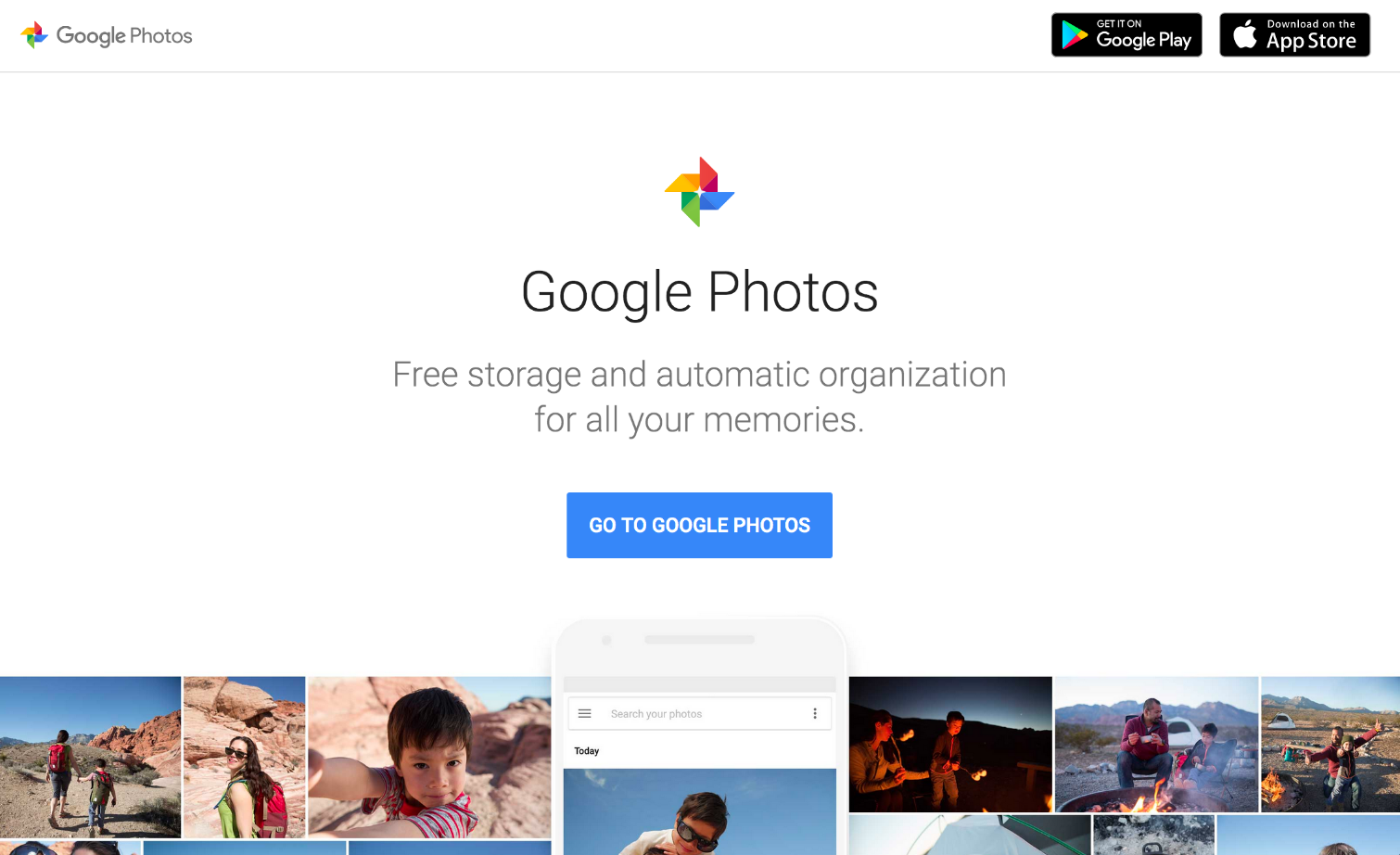
The beginning thing I noticed after downloading the Google Photos app was how many garbage images I had on my iPhone, including failed shots like a close-upwards of my finger and reminder snaps I'd take of a sign. Using Google Photos gave me an opportunity to weed out the junk, which I could do either in the mobile app or in the web interface on my computer. In the app, a trashcan icon appears below the image (along with icons for editing, sharing, and searching for like images). In the spider web version, click on a photo to bring information technology upwards in a new window, and click on the trash can icon displayed on the upper right.
MORE: Best photo editing software
To prevent photo and video uploads from bravado through your data cap, the mobile app can be set to upload only over Wi-Fi. To confirm that setting (or change it), press the menu icon (three parallel lines) on the upper left of the app. And so click Settings>Support & sync. Make sure the two switches at the bottom of the screen, "Employ cellular data to support photos" and "se cellular information to support videos," are turned off.
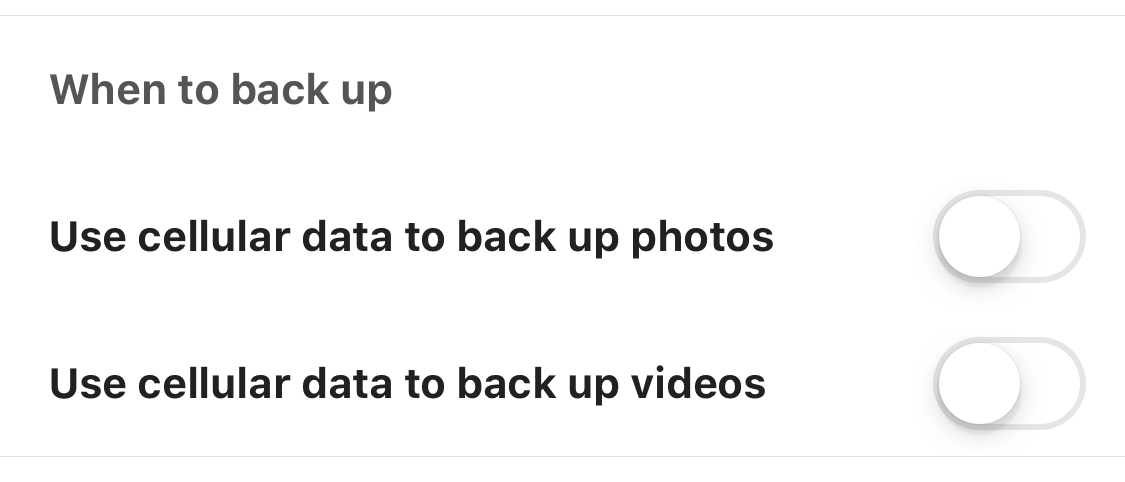
Step 2: Select the quality level for uploads
Google Photos is currently gratis — if yous agree to let it store compressed copies of your media. If the pictures are larger than 16 megapixels, Google Photos will downsize them to that size. (The originals on your estimator or mobile device are non contradistinct.) Videos are capped at 1080p resolution. Yous can salvage unaltered originals, including RAW image files, using the Original setting in the app, and store them in your Google Drive account, which includes 15GB of complimentary storage. (That storage is shared amidst all Google services, such every bit your Gmail or Google Docs account.) If yous need more space for your unaltered originals, you lot can upgrade, from 100GB for $1.99 per month, to 2TB for $9.99 per month.
Annotation besides that free storage comes to an end on June 1.
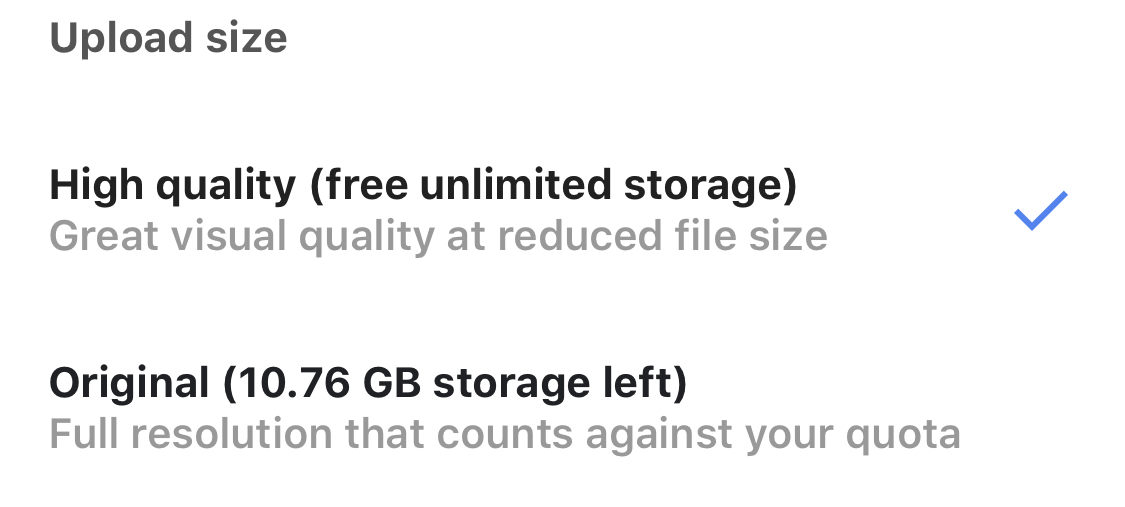
Unless you're extremely fussy, the complimentary choice is fine. I uploaded copies of the same photo of my boss Mark, shot with a pro-grade Canon 5D Mark Ii DSLR, using both the High Quality (i.e. compressed) and Original settings. No one in our function — including the photographer who took the photograph — saw a clear difference onscreen.



That'south especially impressive considering the unaltered JPEG version was four.5MB, whereas the other JPEG was just 0.85MB. You lot tin can meet for yourself by clicking on the 2 images below to view cropped portions displayed at 100 percent.
With many new cameras shooting xx-MP and larger images, you may lose some resolution with the costless option, only even a 16-MP image is larger than you can display at full size online and large plenty for at least a 12 x fourteen-inch impress.
Footstep 3: Navigate your images
Past default, Google Photos opens in the Photos view, which organizes images and videos by date, with the newest ones at the meridian. On the mobile app, you can spread your fingers over the screen to zoom in and view the photos by month, and then mean solar day and then private photos. Then, you lot can compression to zoom dorsum out. In the web interface, you can click on a timeline that runs down the right side of the page.
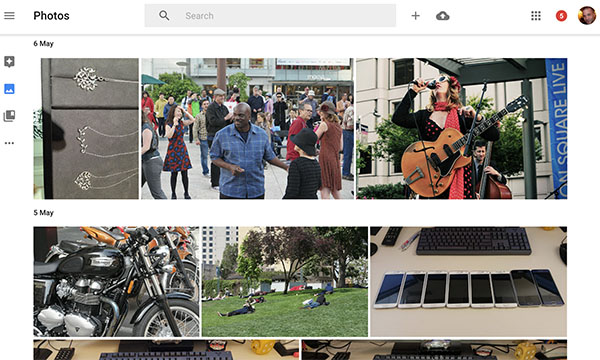
Borer the Albums icon at the bottom of the mobile app or the left of the spider web interface brings up a new view, organized past People, Places, Things, Videos, Collages, Animations, and Movies, which are edited videos. (We'll hash out actual album cosmos later on on.) The starting time category uses confront-recognition technology to grouping photos of the same person. This is a common feature in most photo-organizing apps, as is organizing photos by place, if they were taken on a smartphone or GPS-enabled camera that records location data.
Clicking on the People category brings upward portrait photos, and clicking each portrait brings up all the pictures that Google thinks are of the same person. If a photo doesn't vest, click on information technology to bring up a new screen in the app (or click the "i" icon on the web), scroll downwards to "People" and click the pencil icon to the right. So click the red dot on the thumbnail of the album you lot want to remove it from,` or click the blue dot on the album you want to add together it to.
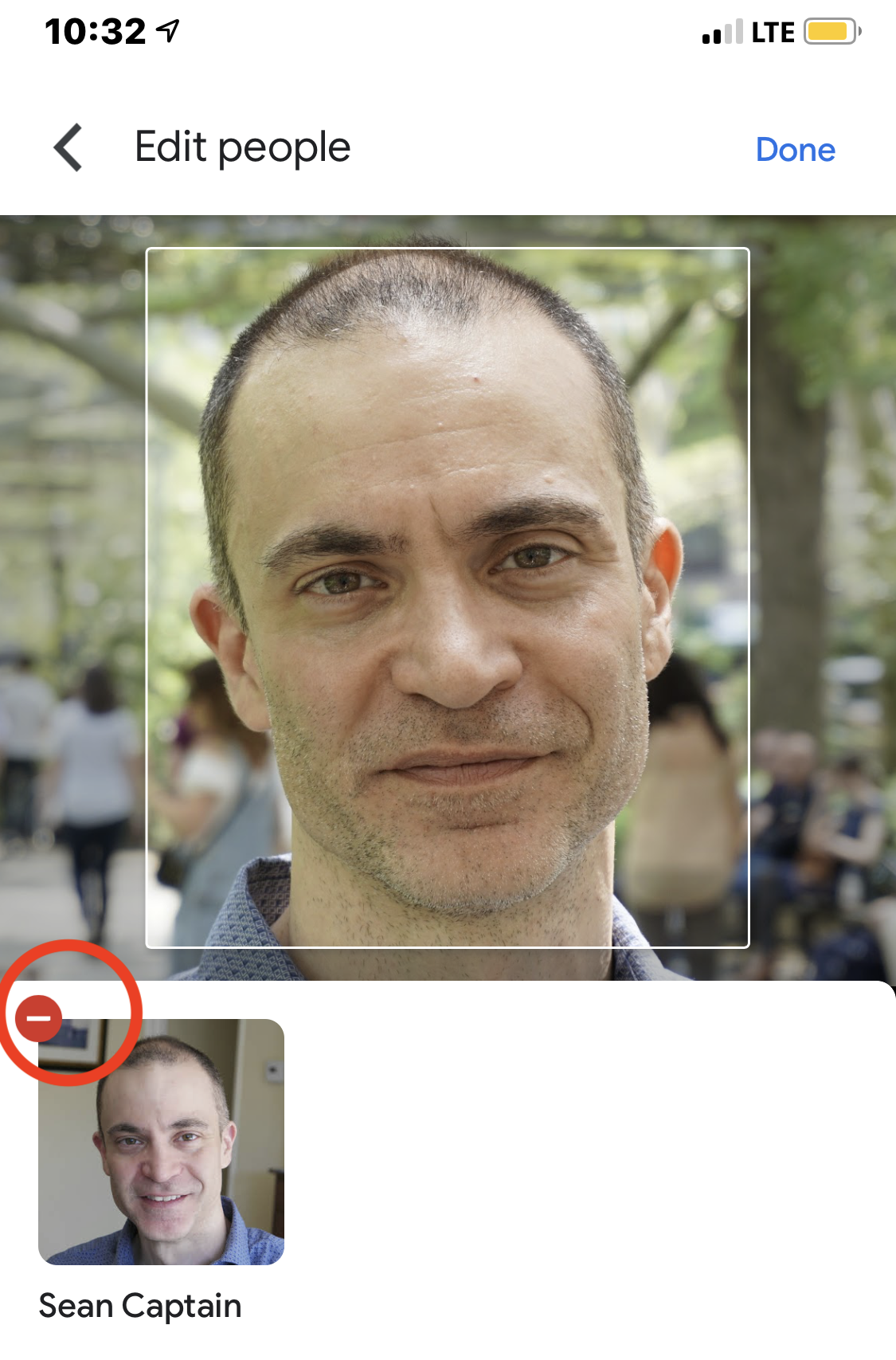
You tin name the person in the photos by tapping "Add a name" under their main profile motion-picture show. If yous exercise that for your ain photograph, Google associates your account with the pictures. Your contacts in Google Photos or in your Gmail accost book volition be alerted if you lot announced in a photo they take, and Photos will suggest that they share the picture with you. If y'all observe this degree of personalization creepy, don't label your group of faces. If you already take and want to undo information technology, tap the three dots in the upper right of the screen, and select "Remove name label." You tin can shut off face recognition completely by going to Settings (from the master screen), selecting Group similar faces, and clicking off the switch next to "Face grouping."
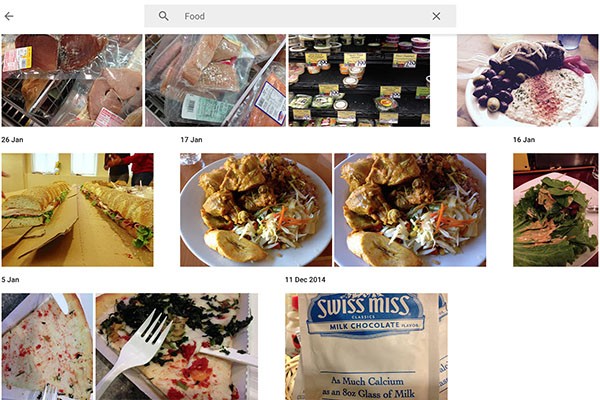
In Things, Google uses its paradigm-search engineering to place the subject field of the photo. My initial batch of exam photos yielded Things in both broad categories, such equally Food, Sky, Selfies and Cars, and more specific ones, such as Stained glass and Fog (both of which I did photograph). Food worked perfectly — showing snaps of sushi, pizza, a supermarket cart and even an ad for hummus and a packet of hot chocolate mix. The Cars category was pretty funny but less accurate, featuring a machine and a truck, simply also a video of someone on a subway train and a portrait of someone with cars in the background.
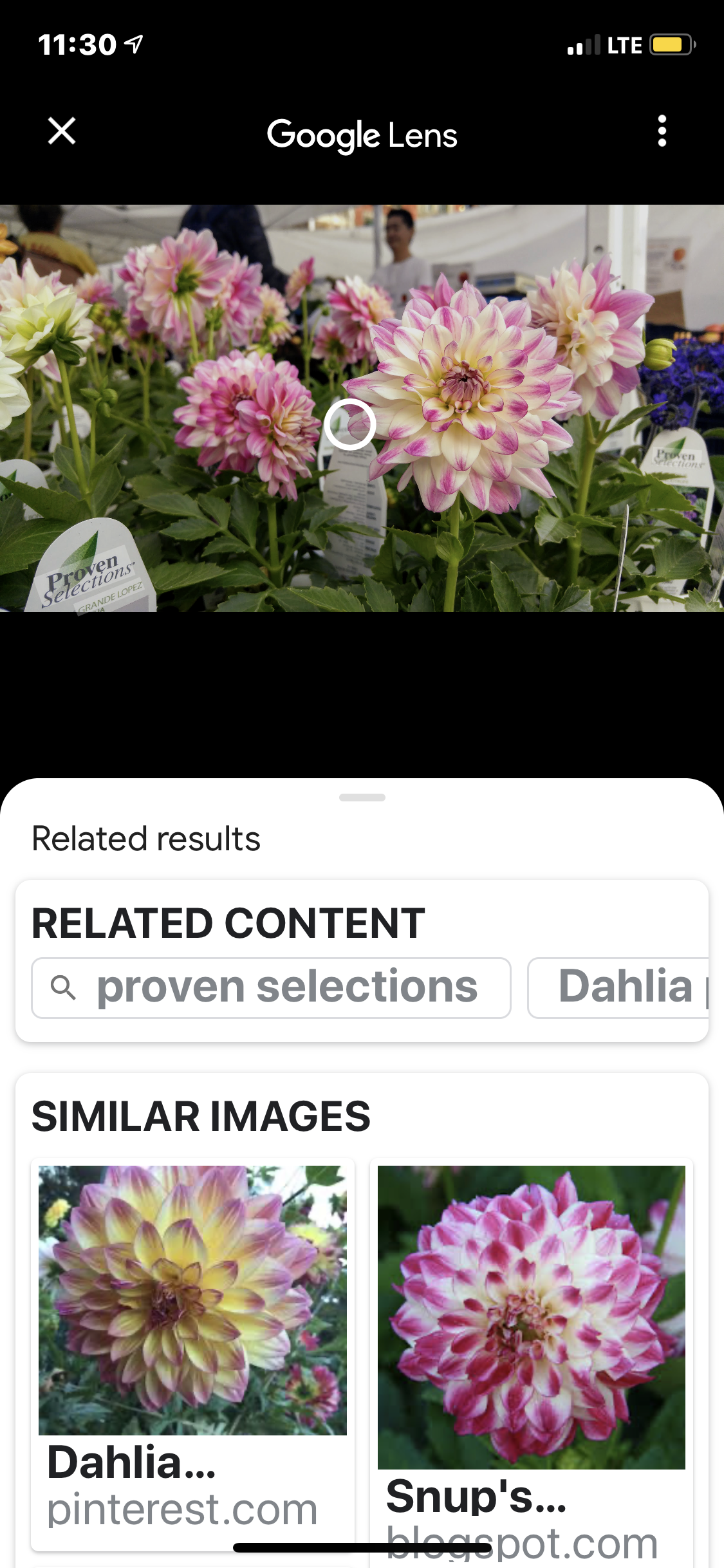
When y'all bring upward an individual photo, you can also click below information technology on icon of a dot within a square to activate Google lens. It will analyze the photograph and provide search results of like images from around the spider web. For case, I learned that some flowers I shot in the park are examples of the dahlia pinnata variety.
Step four: Edit your pictures
Google Photos offers a good assortment of editing tools in the app and web interface. Y'all might start with crop and rotate to trim the photo and tilt it if the shot was crooked. For quick touchups, the app offers 12 Instagram-style filters with ambiguous names. West, for example, cranks up the whites in images, and Vista is a loftier-contrast black-and-white effect. Each filter has a slider that lets you suit the intensity of the outcome. You tin save a copy with your furnishings, and you always have the Cancel option to disengage all changes.
There are besides traditional adjustments, beginning with Light (brightness) and Color (spelled "Colour" in the web version) . Borer an pointer to the correct of the Light and Colour sliders displays fine-grained adjustments, such equally Exposure, Dissimilarity and Highlights under Lite; and Saturation and Warmth nether Color. The Color department also features specialty adjustments called Peel tones and Deep blueish (for skies and water).
Editing video clips (possible but in the app) is express to trimming from the commencement or end of a prune or rotating the video if the orientation came out wrong (such equally upside down) when you shot it. (Later on on, nosotros'll show how you tin can combine multiple clips into a movie.)
Stride 5: Create albums, photo books, collages and movies
Google Photos lets y'all combine your images into an Album, Collage or Animation (a series of photos that play in a looping slideshow yous tin share equally an blithe GIF).Yous create them all the same way: past reviewing your photos and selecting the ones yous want to include. You can then add, delete or rearrange images to your liking.
You tin too arrange images to make photo books, which you receive in print form. (Books start at $9.99 and go up based on the number of photos. You can also lodge private prints and prints on canvas).
Motion picture creation is available merely in the mobile app, since it relies on the touch screen for making quick edits. First select multiple clips or photos (upwardly to l). Y'all tin drag and drop clips to gear up the order they play in and slide your finger across each clip to select its start and endpoint. You can also supersede the recorded sound with another audio file.
Sharing is a big part of Google Photos. By default, all of your photos and videos (and anything you create using them) are private. You can share a single photo or video by borer on it and selecting the upload icon on the lower left of the screen. On iOS devices, the icon is a box with an arrow coming out of it, and on an Android devices, it's a "<" icon. (Sharing Albums, Animations, Collages and other creations works similarly.)
The Share button brings upwards the standard options for your iOS or Android phone, such as e-mail, Facebook, Twitter or text bulletin. These options depend, in office, on which apps you have installed on your phone. (If y'all accept a Gmail account, you besides see thumbnails of suggested contacts to electronic mail directly.) You can also click the Create link button to generate a unique URL for your selections that y'all tin can paste into an electronic mail, text or other message. That URL isn't tied to the person you send it to; anyone with the URL tin can view the photos associated with it. Y'all tin can, however, revoke a URL to cut off views at any time.
More than: How to Take a Smashing Selfie
Y'all can also select multiple pictures past pressing down on one of them for a few seconds until a circle appears in the upper left of each epitome; then tap photos 1 by one to select them. Alternately, just drag your finger across a whole bunch to photos (without offset pressing down) to get them all at once
Bottom line: A good starting point
Google Photos is very efficient for uploading, storing and syncing your photos and videos. Its automated tools, such the Things album or Lens, provide handy ways to search your ain photos, recognize text and find related fabric on the web.
If you are a professional or even a serious amateur lensman, the heavy pinch of images (despite how adept they look) in the free version volition probable be a deal-breaker. The cost for storage of full resolution photos is in line with what yous would go from other cloud services, like Dropbox Even if Google Photos isn't your main storage site, in that location's no harm in using a free business relationship as a 2d repository to hands share samples of your images.
You aren't giving up any rights to your creations, and Google (at least for now) has no plans to "monetize" the content.
And if your primary desire is to chop-chop share snapshots from your trove of cellphone pics, Google Photos is a very handy tool indeed.
- Best photo editing apps
- The best cloud storage for photos and pictures: free and paid
Follow Sean Helm @seancaptain. Follow u.s. @TomsGuide and on Facebook.
feinsteinbrind1964.blogspot.com
Source: https://www.tomsguide.com/us/google-photos-tutorial,review-2858.html
Post a Comment for "Google Photos How to Refresh Movie Upload"